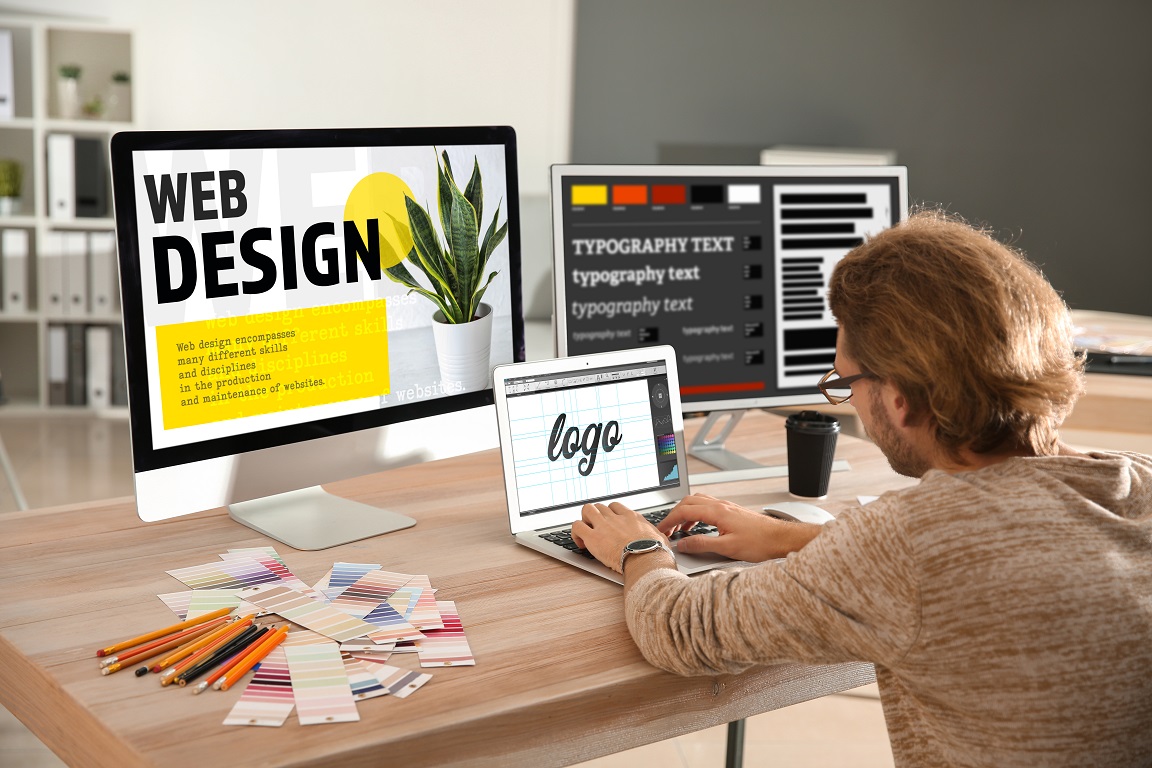Exactly How Responsive Web Style Influences User Experience Across Gadgets
Responsive web design plays a critical duty in forming individual experience throughout a wide variety of gadgets, as it makes it possible for internet sites to fluidly adjust to varying screen sizes and resolutions. Comprehending these interconnected components raises important inquiries regarding just how companies can leverage receptive design to maximize individual involvement and contentment.

Significance of Responsive Layout
As users progressively accessibility internet sites on a variety of gadgets, the value of responsive style comes to be critical. Responsive layout ensures that a site's design and web content adjust seamlessly to different screen sizes, positionings, and resolutions (Web design in Penang). This versatility is essential in today's electronic landscape, where users engage with content on smartphones, tablets, laptops, and desktop computers
The significance of responsive design expands past mere visual appeals; it improves functionality and availability, supplying users with a consistent experience no matter the tool made use of. A well-implemented receptive style lessens the requirement for users to zoom or scroll excessively, streamlining navigation and improving total satisfaction.
In addition, receptive style is necessary for seo (SEO) Search engines, such as Google, focus on mobile-friendly internet sites, indicating that a responsive site is most likely to rank greater in search outcomes - Web design in Penang. This not only raises presence yet additionally drives website traffic and involvement
Advantages for Mobile Users
Mobile customers experience unique advantages when communicating with responsive internet sites. Largely, these sites are designed to adjust flawlessly to various display sizes and orientations, ensuring an optimum viewing experience despite the gadget in usage. This versatility boosts use, allowing individuals to navigate through content easily without the demand for extreme scrolling or zooming.
In addition, responsive layout gets rid of the irritation of running into non-optimized websites that may result in distorted formats or missing out on capabilities on smart phones. Customers gain from a regular user interface, which cultivates familiarity and minimizes cognitive lots, allowing them to concentrate on their tasks as opposed to struggling with navigation.
In addition, responsive internet sites enhance access by incorporating touch-friendly aspects, such as bigger switches and structured food selections, which provide especially to mobile interactions. This attentiveness to mobile customer experience not just enhances individual fulfillment yet likewise urges longer engagement, as visitors are more probable to stay on a site that is simple to make use of.
Ultimately, the benefits of receptive website design for mobile users add to an extra pleasurable and effective surfing experience, enhancing the importance of adopting this method in today's multi-device landscape.
Influence On Filling Rate
The impact of receptive internet design on filling rate is see here a critical aspect in improving user experience across tools. Responsive internet design maximizes pictures and content for different screen dimensions, making sure that only the essential aspects are loaded based on the device's capabilities.
In addition, receptive design methods typically involve using flexible grids and designs, which adapt to various screen resolutions. This versatility minimizes the demand for excessive resizing or refilling of pages, additionally enhancing rate. Search engines like Google focus on fast-loading sites in their positions, making receptive style not just a user-centric choice however also a critical aspect for search engine optimization.
However, it is necessary to note that bad execution of responsive layout can result in puffed up code and unnecessary read elements that might prevent loading speed. Careful preparation and execution are necessary to totally leverage the benefits of responsive web style in enhancing filling rate and, subsequently, customer experience throughout all devices.
Boosted Navigating Experience
Exactly how can responsive web design change the navigating experience for customers? Receptive internet layout boosts navigating by making certain that food selections, switches, and web links adjust effortlessly to numerous display sizes and positionings. This adaptability is important as individuals progressively gain access to sites from a diverse array of tools, varying from mobile phones important site to tablets and desktop computer systems.
Receptive layouts prioritize user-centric navigation by streamlining accessibility to crucial material. For instance, hamburger food selections, which are small and expandable, permit reliable use of space on smaller sized screens, reducing mess while preserving ease of access. This structured method not just aids in usability however also boosts overall involvement, as individuals can promptly discover information without unneeded scrolling or searching.

Search Engine Optimization Advantages of Responsiveness
Receptive internet layout uses substantial SEO advantages that can enhance a web site's presence and ranking in internet search engine results. Among the main benefits is the debt consolidation of Links. A responsive web site makes use of a solitary link for both desktop computer and mobile versions, which simplifies the indexing process for search engines. This avoids possible replicate material problems that can occur from maintaining separate Links for various gadgets.
Furthermore, Google prioritizes mobile-friendly sites in its positions, making responsiveness a vital consider seo strategies. The mobile-first indexing technique adopted by Google indicates that the mobile variation of a site is taken into consideration the primary version, more emphasizing the value of a receptive design.
Enhanced customer experience, a natural result of receptive design, likewise adds to SEO performance. When individuals locate it easier to navigate an internet site, they tend to stay longer and involve even more, which can lower bounce rates and signal to online search engine that the material is pertinent and valuable.
Final Thought
In final thought, receptive internet design plays an important function in boosting user experience throughout numerous tools. The advantages extend past user contentment, as a responsive design additionally adds positively to search engine optimization initiatives.